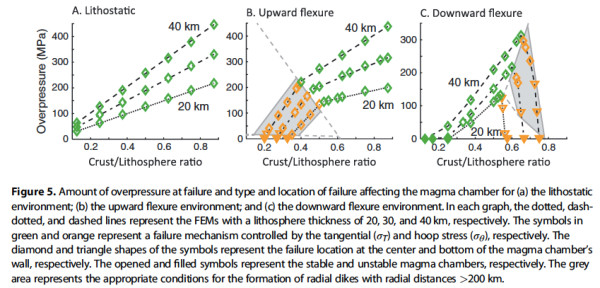As described in a previous post, giant radial dike systems may be commonly observed on Earth and Venus but that doesn’t mean they’re easy to form! In a paper recently published in the Journal of Geophysical Research-Planets, Dr. Nicolas Le Corvec, Dr. Gerald Galgana, Dr. Patrick McGovern (colleagues from the Lunar and Planetary Institute in Houston, TX) and I show that mechanical layering — i.e. including crust and mantle layers explicitly within a modeled lithosphere — can help promote radial dike formation and long-distance propagation. Specifically, when a mechanically layered lithosphere flexes due to either surface or basal loading (e.g., in response to edifice growth or plume impingement), radial dikes formed by rupture of an inflating magma reservoir can in some circumstances propagate for 100’s of kilometers. In addition to providing new mechanical insight into giant radial dike swarm formation, our results are also important because the lateral extent of giant radial dike systems can, in theory, provide a new way to constrain the ratio of crust and mantle lithospheric layer thicknesses on Venus.
